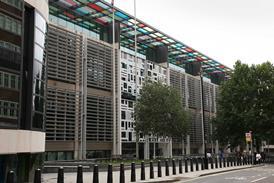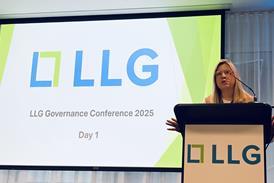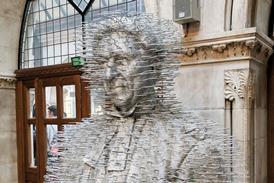My recent article dealt with the Civil Procedure (Amendment No. 4) Rules 2011 (SI 2011/3013) which came into force on 19 March 2012. These rules, together with practice direction (PD) changes in update 58, dealt with the necessary procedural changes caused by the establishment of the National Civil Business Centre (NCBC) for all county courts.
Further amendments have now been made by the hastily enacted Civil Procedure (Amendment) Rules 2012 (SI 2012/505), which also came into force on 19 March 2012.
Designated money claims
First, a reminder of new and important definitions. A ‘designated money claim’ must now be issued at the NCBC. It is defined in rule 2.3(1). It ‘means any claim which:
- is started in a county court under part 7;
- is only a claim for either or both a specified amount of money or an unspecified amount of money; and
- is not a claim for which special procedures are provided in these rules’.
Thus the vast majority of claims for debt or damages must be issued not at the local county court but at the NCBC.Paragraph 4(a)(i) of PD7A states: ‘In all designated money claims, practice form N1 must be sent to "County Court Money Claims Centre, PO Box 527, M5 0BY".’ Practice form N1 is, of course, the claim form. As is now well known, the NCBC is located in Salford. However, for reasons explained in the previous article, the NCBC will issue all claims in the name of Northampton County Court.
Functions of the NCBC
The NCBC will deal with issue, service, default judgment, admissions and offers to pay and, where a defence is filed, with the issue of allocation questionnaires. In defended cases, after filing allocation questionnaires, the case will be transferred to another court.
Preferred court
Before 19 March 2012, a claimant could issue in any county court. Although a claimant can no longer issue in a court of choice, the new rules are not intended to change the claimant’s freedom to choose the court in which the case will proceed. Thus the claimant must choose a ‘preferred court’ on issue to enable the NCBC to transfer the case. Rule 2.3(1) provides that a preferred court means ‘if the claim is proceeding in a county court, the county court the claimant has specified in practice form N1 as the court to which the proceedings should be transferred if necessary’.
In debt cases where the defendant is an individual the rules on automatic transfer to the defendant’s home court are not affected. But defended damages claims and defended debt cases where the defendant is not an individual will be transferred to the ‘preferred court’ by the NCBC. Whether or not it remains there will be a case management decision for the district judge at the preferred court.
Enforcement
But what about enforcement where judgment has been entered at the NCBC either as a default judgment or on acceptance of an admission and offer? If it is intended to enforce by issuing a warrant of execution, the warrant is issued at the NCBC. The warrant will then, as has always been the case, be sent to the bailiff of the relevant county court for execution.
The Civil Procedure (Amendment) Rules 2012 have made important changes to part 71 (orders to obtain information from judgment debtors - often still referred to by its pre-CPR name of ‘oral examination’); part 72 (third-party debt orders); part 73 (charging orders) and CPR Schedule 2 CCR Order 27 (attachment of earnings). The reason for the changes is that various rules required that the application for any of these orders be issued in the court where judgment had been obtained. As explained, technically, under the new regime that would be Northampton County Court. Thus all such applications would have had to be issued there. That would not only be undesirable and inconvenient, but in many cases also unjust.
Rule 71.2(2)(b) now provides: ‘An application… must be issued in the court which made the judgment or order which it is sought to enforce, except that (i) if the proceedings have since been transferred to a different county court, it must be issued in that court; or (ii) subject to paragraph (b)(i), if it is to enforce a judgment made in Northampton County Court in respect of a designated money claim, it must be issued in accordance with section 2 of PD70.’ There is a similar amendment to part 72 in the form of a new sub-rule 72.3(1)(b) and also to part 73 in the form of a new rule 73.3(2)(e). All refer to the amended PD70.
The new section 2 of PD70 (published as ‘update 58’) provides at paragraph 9.1: ‘Where an application is made to which rule 71.2(2)(b)(ii), 72.3(1)(b)(ii) or 73.3(2)(e) applies, it must be filed in the court for the district in which the judgment debtor resides or carries on business.’
In the case of attachment of earnings, the position is only slightly different. Order 27.3(1) (which is not amended) states that, subject to rules (2) and (3), the application may be made to the court for the district where the debtor resides. Order 27.3(2) applies where the debtor does not reside in England or Wales or the creditor does not know where he resides, and order 27.3(3) applies where two or more debtors are liable. Amendments to CCR Order 27 again merely refer to PD70 and paragraph 10 of PD70 provides: ‘10.1 Where an application is made under rule 3(2) the application must be filed in the court for the district in which the judgment creditor resides or carries on business.
‘10.2 Where an application is made under rule 3(3), the application must be filed in the court for the district in which one or more of the debtors resides or carries on business.’
Automatic transfer
The case will, of course, have to be transferred from Northampton County Court (that is, in reality, from the NCBC) to the enforcement court. But an application to transfer is not required, as the new paragraph 11.1 of PD70 states: ‘Unless the court is satisfied that the application does not comply with the rules, it will transfer the proceedings to the court in which the application was filed and a court officer will inform the County Court Money Claims Centre of the transfer.’
Conclusion
County courts were created in 1846 to provide local justice. But the country is very different in 2012 and ‘local’ is interpreted differently. If having just one ‘back office’ to process county court claims means that the principle of trying cases locally is retained then it is probably a price worth paying.
District Judge Hill sits at Leeds, York and Scarborough county courts. He a member of the Civil Procedure Rule Committee



























No comments yet